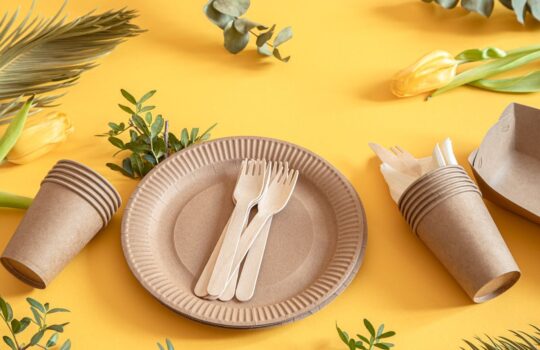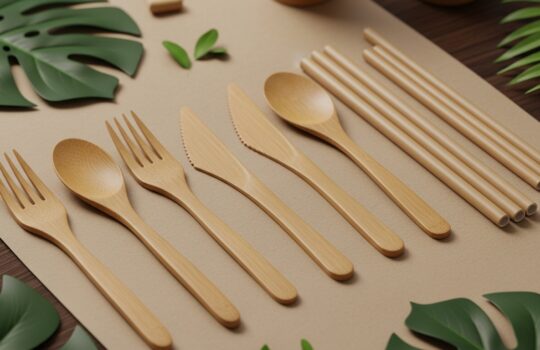Storing food efficiently and sustainably is more important than ever. Recyclable plastic containers have become a go-to solution for their convenience, durability, and environmental benefits—but are you using them to their full potential? In this guide, we’ll explore the best practices for storing food in recyclable plastic containers, helping you keep your meals fresh, reduce waste, and make smarter choices for the planet. Whether you’re meal prepping for the week or saving leftovers, these tips will help you maximize both the lifespan of your food and the impact of your eco-friendly efforts.
Best Practices for Storing Foods in Recyclable Plastic Containers:
Here are some of the best practices for storing food in recyclable plastic containers:
Pick the Right Container
Not every plastic container is the same. Select high-quality food storage containers that are free from BPA. It’s also a good idea to check the recycling symbol (the number inside the arrows) to ensure that your local recycling program accepts it. Having a variety of different shapes and sizes on hand allows you to store everything from soups and sauces to salads and snacks without occupying too much space.
Let Food Cool Before Storing
A common mistake is placing hot food directly into a plastic container. This can cause the plastic to bend or break down over time, and it may even allow chemicals to seep into your food. More importantly, it makes the air warm and damp, which is conducive to bacterial growth, thereby increasing the likelihood of food spoilage. Always let your food cool to room temperature before placing it in a container and storing it in the fridge or freezer.
Clean and Dry Containers
Cleaning properly is crucial for keeping food safe and ensuring containers last longer. After each use, wash your containers with warm, soapy water. If you have stains or smells that won’t go away, make a paste of baking soda and water, put it in the container for a few hours, and then wash it as usual. Always ensure that containers are completely dry before storing them to prevent the growth of mold and mildew. Not putting lids on them lets air flow better.
Know What Not to Do
Plastic containers can be used for many purposes, but not for all types of food. Highly acidic foods, such as dressings made with citrus or tomato-based sauces, can stain and damage plastic over time. Very greasy or oily foods can also be hard to clean and leave a permanent mark. You could use glass containers instead of these things.
Perfecting the Art of Organization
A well-organized storage system makes things easier and reduces food waste. Use see-through containers so you can easily see what’s inside. Place newer items at the back and older items at the front to create a “first in, first out” system. You can also write on the containers what they hold and when you put them in, which is especially useful for meals you keep in the freezer. Stacking uniform containers on top of each other can save a significant amount of space in your pantry and refrigerator.
Looking for Recyclable Containers that Last? Planetize Packaging Has You Covered:
Small changes in how you store food can make a big difference. You can do more than just keep your meals fresh by picking the proper recyclable plastic containers, cooling your food correctly, and keeping your containers clean and organized. You help the environment by throwing away less food, making your things last longer, and supporting the recycling ecosystem. Following these steps is a simple but powerful way to make your kitchen more organized and the planet healthier.
At Planetize Packaging, we are committed to providing eco-friendly, high-quality solutions that align with your sustainability goals. We offer a variety of custom packaging options that can be recycled or composted, all of which are designed to last and ensure safety. When you buy from Planetize Packaging, you’re not just purchasing a container; you’re also investing in a greener future and partnering with a company that prioritizes environmental sustainability. Explore our collection today and select something that benefits both your food and the environment.
Frequently Asked Questions:
Can I use the microwave or freezer to store recyclable plastic containers?
It depends on what kind of container you have. Always check the bottom for symbols indicating whether the item is safe for use in the microwave, freezer, or both. If a container doesn’t indicate it’s safe for the microwave, heating it could cause the plastic to melt or release chemicals. When you freeze food, leave some space at the top to allow for expansion.
Are all plastic containers that can be recycled safe for food?
Not always. Always look for containers that say “food-safe” or “BPA-free” on them. BPA is a chemical that has been linked to health problems, so the safest way to store food is in plastic that doesn’t contain it.
How can I determine if a plastic container is recyclable?
Search for the recycling symbol with a number inside it first. Next, and most importantly, review the rules established by your city’s recycling program. What you can recycle in one town may not be recyclable in another, as recycling options vary significantly from place to place. If you’re unsure, check the website of your local waste management company for more information.







